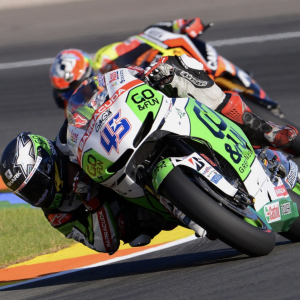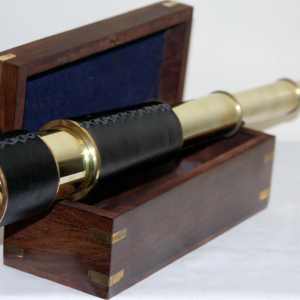Want to experience the greatest in board studying? Check out our interactive question bank podcast- the FIRST of its kind here: emrapidbombs.supercast.com
Authors: Payal Patel (MS4); Blake Briggs, MD
Introduction
Acute otitis media (AOM) is a commonly seen problem in children and is the most common reason antibiotics are given in pediatric patients. AOM is an acute bacterial infection of the middle ear. Children are more susceptible due to shorter eustachian tubes and limited immunity to bacterial and viral pathogens. However, for something being so common, it is extremely difficult to diagnose. We are not kidding. Clinical history is poorly accurate, viewing the tympanic membrane (TM) can be difficult, and even if you see the TM, there is much varying interpretation. This review tries to make sense of diagnosing and treating AOM. We will focus on children because they make up the vast majority of cases, and the antibiotic options are the same in adults too.
Risk Factors and Microbiology
Here are some things you don’t want to learn but have to for the test (especially if you are a medical student). Some common risk factors for AOM include second-hand smoking, cold environment, genetic predisposition, low socioeconomic status, and reduced duration of breast feeding. The most common bacterial species associated with otitis media include Streptococcus pneumoniae, non-typable Haemophilus influenzae, and Moraxella catarrhalis. Due to vast efforts of vaccination against Streptococcus pneumoniae, prevalence rates have declined.
Clinical Manifestations
AOM typically presents in children with symptoms such as ear pain, ear rubbing, hearing loss, ear drainage, and low-grade fever. Most young children with AOM often present with nonspecific symptoms such as fever, fussiness, poor feeding, vomiting, diarrhea, and disturbed sleep.1 However all of these symptoms are nonspecific and not very sensitive.
Diagnosis
Accurate diagnosis of AOM is essential as this prevents the overuse of antibiotics. A thorough otoscopic evaluation is key to diagnosis of AOM.
Clinical diagnosis of AOM means acute onset of symptoms with signs of middle ear effusion and inflammation. So, here’s what you need to see:
Accelerate your learning with our EM Question Bank Podcast
- Rapid learning
- Interactive questions and answers
- new episodes every week
- Become a valuable supporter
- Bulging of tympanic membrane—most specific sign of acute inflammation.2
- Perforation of tympanic membrane with acute purulent otorrhea (be sure to exclude otitis externa).2
- Signs of acute inflammation (marked erythema of tympanic membrane and fever or ear pain) AND middle ear effusion.3
Complications of AOM4
- Mastoiditis: Postauricular swelling and protrusion of the auricle. This is super rare in the antibiotic era. Expect fever, very tender skin, and posterior auricular region, and potentially swelling of the skin of the mastoid region with discoloration in some cases.
- Vestibular symptoms: Dizziness, vertigo, balance, and motor issues
- Cranial nerve palsies: very rare.
- Meningitis: almost unheard of in the post-antibiotic era.
Management
Pain control: The usual- oral ibuprofen or acetaminophen.
Antimicrobial therapy: So here is where it gets really interesting. The AAP and other experts have increasingly advocated for observation without antibiotics in patients 6 months to 2 years old with “unclear” diagnosis and in those >2 years old with non-severe otalgia and fever ≤ 39 C. Some studies even suggest some patients do better without antibiotics (shorter duration, less treatment failure, less drug-associated complications).
Patients with increased risk of severe infection, complications, and/or recurrent AOM should be treated with antibiotics. These patients are typically <6 months of age, immunocompromised, toxic appearing, and/or have craniofacial abnormalities (cleft palate).3
Initial therapy: Amoxicillin or amoxicillin-clavulanate
- 10 days for children <2 years of age and children with tympanic membrane perforation or history of recurrent AOM5
- 5-7 days for children 2 years with intact tympanic membrane and no history of recurrent AOM6
Children with mild reactions to penicillin antibiotics: Oral cephalosporins (cefdinir, cefpodoxime, cefuroxime, cefuroxime)6 or IM ceftriaxone7.
Recurrent episodes of AOM after completion of successful treatment:
o Recurrence within 15 days of antibiotic completion8
- Treated initially with amoxicillin: try amoxicillin-clavulanate
- Treated initially with an antibiotic other than amoxicillin: try ceftriaxone IM/IV or levofloxacin.
o Recurrence > 15 days of antibiotic completion: high dose amoxicillin-clavulanate
- Tympanostomy tube insertion is typically performed in children with 3 distinct and well-documented episodes of AOM within 6 months or 4 episodes within 12 months if middle ear fluid is present9.
References
1. Schwartz RH, Rodriguez WJ, Brook I, Grundfast KM. The febrile response in acute otitis media. JAMA. 1981 May 22-29;245(20):2057-8. PMID: 7230403.
2. Shaikh N, Hoberman A, Rockette HE, Kurs-Lasky M. Development of an algorithm for the diagnosis of otitis media. Acad Pediatr. 2012 May-Jun;12(3):214-8. doi: 10.1016/j.acap.2012.01.007. Epub 2012 Mar 28. PMID: 22459064.
3. Lieberthal AS, Carroll AE, Chonmaitree T, Ganiats TG, Hoberman A, Jackson MA, Joffe MD, Miller DT, Rosenfeld RM, Sevilla XD, Schwartz RH, Thomas PA, Tunkel DE. The diagnosis and management of acute otitis media. Pediatrics. 2013 Mar;131(3):e964-99. doi: 10.1542/peds.2012-3488. Epub 2013 Feb 25. Erratum in: Pediatrics. 2014 Feb;133(2):346. Dosage error in article text. PMID: 23439909.
4. Bluestone CD, Klein JO. Diagnosis. In: Otitis Media in Infants and Children, 4th ed, BC Decker, Hamilton, ON 2007. p.147.
5. Hoberman A, Paradise JL, Rockette HE, Kearney DH, Bhatnagar S, Shope TR, Martin JM, Kurs-Lasky M, Copelli SJ, Colborn DK, Block SL, Labella JJ, Lynch TG, Cohen NL, Haralam M, Pope MA, Nagg JP, Green MD, Shaikh N. Shortened Antimicrobial Treatment for Acute Otitis Media in Young Children. N Engl J Med. 2016 Dec 22;375(25):2446-2456. doi: 10.1056/NEJMoa1606043. PMID: 28002709; PMCID: PMC5319589.
6. Kozyrskyj A, Klassen TP, Moffatt M, Harvey K. Short-course antibiotics for acute otitis media. Cochrane Database Syst Rev. 2010 Sep 8;2010(9):CD001095. doi: 10.1002/14651858.CD001095.pub2. PMID: 20824827; PMCID: PMC7052812.
7. Klein JO. Review of consensus reports on management of acute otitis media. Pediatr Infect Dis J. 1999 Dec;18(12):1152-5. doi: 10.1097/00006454-199912000-00031. PMID: 10608648.
8. Arguedas A, Dagan R, Pichichero M, Leibovitz E, Blumer J, McNeeley DF, Melkote R, Noel GJ. An open-label, double tympanocentesis study of levofloxacin therapy in children with, or at high risk for, recurrent or persistent acute otitis media. Pediatr Infect Dis J. 2006 Dec;25(12):1102-9. doi: 10.1097/01.inf.0000246828.13834.f9. PMID: 17133154.
9. Hoberman A, Preciado D, Paradise JL, Chi DH, Haralam M, Block SL, Kearney DH, Bhatnagar S, Muñiz Pujalt GB, Shope TR, Martin JM, Felten DE, Kurs-Lasky M, Liu H, Yahner K, Jeong JH, Cohen NL, Czervionke B, Nagg JP, Dohar JE, Shaikh N. Tympanostomy Tubes or Medical Management for Recurrent Acute Otitis Media. N Engl J Med. 2021 May 13;384(19):1789-1799. doi: 10.1056/NEJMoa2027278. Erratum in: N Engl J Med. 2022 May 12;386(19):1868. PMID: 33979487; PMCID: PMC8969083.



